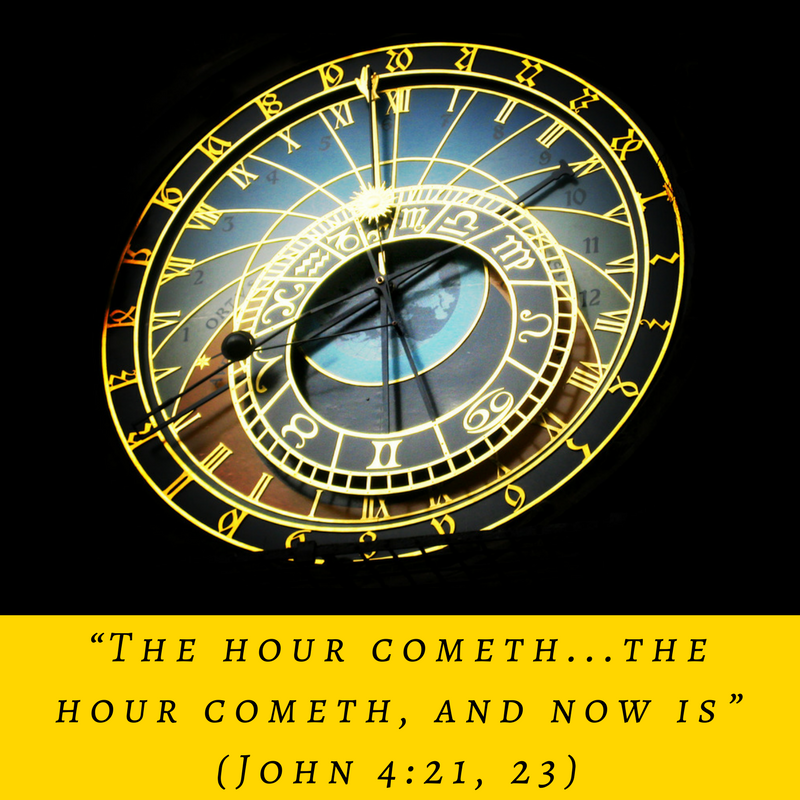Announcement

The Southern Christian Writers Conference has chosen my book, Inmillennialism: Redefining the Last Days, as a finalist for their 2021 Notable Book Award. They will host their Book Expo and live stream the award ceremony on Facebook (here). The Expo starts at 10 am (CST) and the awards at 3 pm, Saturday, February 6, 2021.
![]()
As I mentioned in my last post, I am republishing three posts from the 2018 series on Revelation to prepare for a discussion of Paul’s “rapture passage” (1 Thess 4:13–5:11). The following post, the second of these, first appeared here.
![]()

A reader asked a provocative question after reading our last post, in which I discussed the timing of the millennium. I compared the first and second resurrections in Revelation 20 to the two resurrections in 1 Corinthians 15. I showed the general nature of the second resurrection by using John 5:29.
That prompted his question: “Do you see the two resurrections in John 5:25 and 5:29 as parallel to the two resurrections in 1 Corinthians 15 and the two resurrections in Revelation 20?” My answer is, Yes. And, I plan to explain the reasons for this answer in next week’s post. I want to do some preparatory work here.
Already-Not Yet?
Commentators often appeal to a nebulous concept they call the “already-not yet” perspective to explain prophecies about the millennial kingdom of God. This is especially true when they discuss the timestamps Jesus and the apostles used to describe it (e.g., Matt 16:27–28). I question the usefulness of this concept and challenge its application to kingdom prophecies. I agree with Mark A. Seifrid’s analysis: “The expression … has become much over-used and little understood.”1 Let’s discuss some of its weaknesses, then search for a better alternative.
Using “already-not yet” concerning the kingdom is almost meaningless. Let us consider one example, chosen almost at random. Carl F. H. Henry says, “The incarnation of the Logos … [forces] upon us an exposition of God’s kingdom in terms of both the ‘already’ and the ‘not yet.’”2 This is not wrong per se, but it is unhelpful.
What do such “already-not yet” statements mean? Do they just mean God has fulfilled some kingdom-prophecies, but not all? If so, how is this helpful? Few people misunderstand or deny this truth. To describe the kingdom as “already-not yet” is to state the obvious; it is a superfluity. Such assertions do not increase our understanding of Christ’s reign;3 they do little to advance our understanding of prophecy.
The “already-not yet” catchphrase can also be misleading. It can hide important details about both the “already” and the “not yet.” For example, Paul said, “The night is far spent, the day is at hand” (Rom 13:12). Should we cast this into the “already—not yet” bucket and move on? If we do so, we may miss the prophetic importance of his statement. He meant that the end of the Mosaic-age night was far spent and that the messianic-age day was almost a reality. This state of affairs was a reality in Paul’s generation, but it is not an ongoing “already—not yet” orientation of the entire messianic age. Paul did not mean, as some prophetic models suggest, that we are now waiting for the coming “day” of the eternal state and longing for the “night” of our pilgrimage on earth to end. Jumping too quickly to the “already-not yet” crutch can skew our understanding of prophecy.
Writers sometimes use this formula to distort clear Biblical prophecies in other ways. For example, Jonathan Menn cannot accept Jesus’ timestamp in the Olivet Discourse—all the things the Lord predicted there would occur in his generation (Matt 24:34). This leads him to reject John’s statements that the visions in Revelation pertained to his immediate future (Rev 1:1, et al.). He justifies his positions by saying,
John’s time references link the present and the future. They show that the principles about which he writes already are present and active. They are consistent with the “already, but not yet” nature of the kingdom and with the “signs” Jesus gave in the Olivet Discourse, which occurred in principle in his own generation yet allow the consummation to occur at an unpredictable time in the future.4
This is doublespeak; earthquakes, false prophets, and the Temple’s destruction cannot occur “in principle.” They will not re-occur “at an unpredictable time in the future.” The invocation of the “already-not yet” principle cannot change Jesus’s timeframe5 for his coming and parousia; all these things would occur in his generation (Matt 24:34). This “already—not yet” slogan cannot alter John’s timing for his Revelation visions.6 They “must come to pass in their entirety shortly” (Rev 1:1).7
I am not saying the “already—not yet” paradigm has no value, but the “not yet” part of almost all New Testament prophecies pertained to the apostles’ near future; we should not claim their “not yet” as our own in most passages. Commentators have misused this paradigm for too long; I suggest we need to find a better slogan to describe the prophetic framework in the New Testament.
An Alternative for “Already-Not Yet”
Jesus provided the needed alternative to the “already-not yet” mindset. He described the kingdom in terms of “the hour coming” and “the hour is coming and now is.” This two-part saying occurs in two consecutive chapters in John’s gospel. (The second is the passage that generated our reader’s question.) Let’s look at both.
The first instance is in Jesus’s conversation with a Samaritan woman:
The woman said to Him, “Sir, I perceive that You are a prophet. Our fathers worshiped on this mountain, and you Jews say that in Jerusalem is the place where one ought to worship.” Jesus said to her, “Woman, believe Me, the hour is coming when you will neither on this mountain, nor in Jerusalem, worship the Father. You worship what you do not know; we know what we worship, for salvation is of the Jews. But the hour is coming, and now is, when the true worshipers will worship the Father in spirit and truth; for the Father is seeking such to worship Him. God is Spirit, and those who worship Him must worship in spirit and truth.” (John 4:19–24; emphasis added)
This framework refers to a short period—an hour—that would bring a dramatic change involving age transition. The lawful, Temple-based worship of the Mosaic age would stop. The messianic-age worship “in spirit and in truth” would continue; concerns about the proper geographic location would become irrelevant.
The effects of this soon-coming hour were already present. People were already worshipping God in a new way even though the decisive hour had not arrived. The Temple remained in place and the old-age worship continued, but the worship of the messianic age had invaded the last days of the Mosaic age. Many had already tasted “the good word of God, also the powers of the age that [was] about to come” (Heb 6:5).8
Jesus’s “hour is coming—hour is coming and now is” formula pertains to the messianic age (i.e., the millennium). Its full arrival depended on events that would occur in Jesus’ near future—in his generation. They would happen within a short period—in an “hour.” Certain changes necessary for these events to occur were present before the hour arrived.
The second passage containing this formula is in the following chapter. Jesus says,
Most assuredly, I say to you, he who hears My word and believes in Him who sent Me has everlasting life, and shall not come into judgment, but has passed from death into life. Most assuredly, I say to you, the hour is coming, and now is, when the dead will hear the voice of the Son of God; and those who hear will live. For as the Father has life in Himself, so He has granted the Son to have life in Himself, and has given Him authority to execute judgment also, because He is the Son of Man. Do not marvel at this; for the hour is coming in which all who are in the graves will hear His voice and come forth—those who have done good, to the resurrection of life, and those who have done evil, to the resurrection of condemnation. (John 5:24–29; emphasis added)
This “hour is coming and now is—hour is coming” framework means the same here as it did in the previous chapter, even though Jesus reverses the elements; the decisive hour would soon bring the dramatic changes of which he spoke. Here, the changes involve resurrection, and the effects of these changes were already present. Jesus was already raising the (spiritual) dead and giving (spiritual) life to whom he would (John 5:21). This messianic-age norm was a reality in the “last days” of the Mosaic age.
I plan (D. V.) to expand on this thought in my next post.
Conclusion
I suggest we minimize (or eliminate) the “already—not yet” terminology and recognize Jesus’s “hour is coming and now is—hour is coming” orientation. This is the proper view of the kingdom of God from the perspective of the New Testament writers. Effects of the kingdom were a reality in their day, and the full arrival of the kingdom was imminent. A decisive hour would bring the “great tribulation” (Matt 24:21; Rev 7:14), and the Temple would fall, ending the Mosaic age (Matt 24:1, 3, 34).
This kingdom age (i.e., the millennium) is the age in which men worship “in spirit and truth.” It is also the age of resurrection. Our next post will discuss this in relation to the split resurrection in 1 Corinthians 15 and the two resurrections in Revelation 20. I will attempt to show that the hour of which Jesus spoke has passed and that the millennium is a present reality.
Footnotes
- Mark A. Seifrid, “Faith, Hope, and Love: Paul’s Message to the Church At Thessalonica,” Southern Baptist Journal of Theology 3 (3) (Fall 1999), 61.
- Carl F. H. Henry, “Reflections on the Kingdom of God,” JETS 31 (1) (Mar 1992), 40.
- This slogan is important to some dispensationalists. They confine all kingdom promises to Israel’s future. For them, to embrace an “already-not yet” mindset is to leave dispensationalism. See, for example, Bruce A. Baker, “The Dangers of Kingdom Ethics, Part I: Theonomy, Progressive Dispensationalism, and Social–Political Ethics,” Journal of Dispensational Theology 20 (61) (Winter 2016), 231. This is not a factor for non-dispensationalists.
- Jonathan Menn, Biblical Eschatology (Eugene, OR: Resource Publications, 2013), 191 (emphasis added).
- For that timeframe, see When Shall These Things Be?
- For that timing, see The Bookends Of Revelation.
- Kenneth S. Wuest, The New Testament: An Expanded Translation (Grand Rapids: Eerdmans, 1961), 587.
- Wuest, Expanded Translation, 521.

2 comments
Very interesting! I’m still looking for a concise definition of inmillennialism? I consider myself postmill, but I cannot seem to locate second coming passages that stand apart from the body of passages that describe the first century parousia? I’ve just now started reading through your blog posts so I hope to learn how you deal with both this question and the final resurrection.
I’m happy that you are considering inmillennialism, and you can see a concise (relative-to-the-book) definition here.
Inmillennialism doesn’t postulate “second coming passages that stand apart from the body of passages that describe the first century parousia.” Instead, it sees all the ages that preceded the “last days” of the Mosaic age as preparatory for the coming of the messianic kingdom and all those that follow that period as the outworking of its arrival. The parousia is not a point-in-time event in the first century or at the end of history; it is the age-long presence of Christ with His church during the messianic age that began in Jesus’ generation and ends with the bodily resurrection. That event is one of the chief results God will accomplish “in the parousia” (1 Cor 15:23).
Thank you for taking the time to leave a comment!
Mike